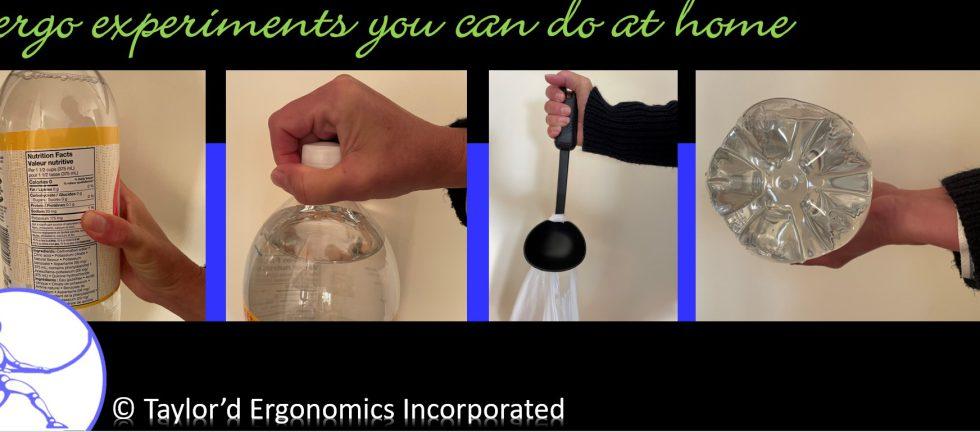A few months ago, I reported about how “glove fit” affects grip strength. (Better fit = greater strength). This morning, I played around with grip endurance using different types of grips, and performed a little experiment at home. Here’s what I did:
- I found a 2-litre bottle of liquid (about 2 kg).
- I opened the stopwatch app on my phone.
- I held the bottle upright, with my right (dominant) hand, for as long as I possibly could. Turns out, that was 68 seconds. I found that my hand really wanted to rotate the bottle to reduce the effort required to grip it, but I forced myself to hold the bottle vertically. (My hand was giving me a clue…)
What about my left hand? I thought I would also experiment with the difference between left and right hand grip endurance. But my hands are small and the bottle is large, so holding the bottle vertically was impossible in my left hand. I couldn’t even lift it off the counter with my left hand.
I wanted to know how I would perform with a “power” grip, which, as we tell people in our training, is considered the strongest grip. So I waited a while to let my muscles recover, put the bottle in a plastic bag, and found a lightweight kitchen tool from which I could hang the weight. The tool allowed me to grip with my palm and fingers wrapped around the handle. Using the power grip, even with my tired muscles, I held the weight for 485 seconds (over 8 minutes….ate a banana, drank my coffee….) before I decided to stop. My arm was shaking, but my hand was fine.
What did this show? The power grip is indeed stronger than more awkward grips; when the item’s grip diameter is too large for the hand, the muscles have to work harder to maintain control. Smaller hands need smaller tools. Larger hands….you get it.
I wanted to experiment with grip postures, so I repeated the exercise a few minutes later, holding the bottle with a pinch grip from the cap. I was able to hold the bottle this way for 156 seconds. The rim at the top of the bottle was digging into my fingers, but in the end, the muscles in my hand failed.
Why is this important? Pinch grips are great for precise tasks, but they are not effective for heavy forces. The pinching muscles in the hand tire easily.
Do the gripping muscles have to work to hold a weight? I tried again, later, holding the bottle sideways “on top of” my palm. In this position, I held the bottle for over 350 seconds. I think I could have gone longer, but I was getting bored. On the plus side, I got to watch a beautiful sunrise, while my biceps were burning.
Why is this important? When the weight is “on” my hand instead of “in” it, my gripping muscles don’t really need to work. When I finally stopped, my biceps were shaky and tired, but my hand and forearm seemed fine. I can’t say which of the last two experiments would have produced a longer holding time, because my muscles were already tired at that point. But both were much easier for my hand muscles than the first two!
| Grip type | Endurance (seconds) |
| Wide grip | 68 seconds |
| Pinch grip | 156 seconds |
| Power grip | 480+ seconds |
| Holding weight “on” hand | 350+ seconds |
As you’ve probably figured out, I really love these “real-life” experiments. I’m all about the “proof” that ergonomics works. This is why people enjoy our ergonomics workshops – we get them to “try” things so they can experience first-hand, how various work practices can affect performance.
Ergonomists have biomechanical models that predict “population” strength and endurance, and that’s what we use in our assessments. But nothing beats “hands-on” learnin


